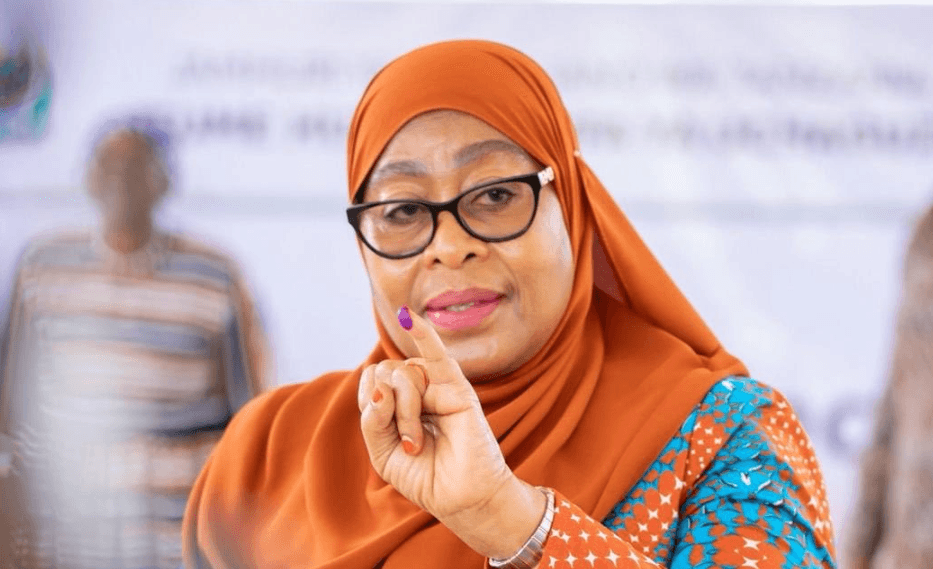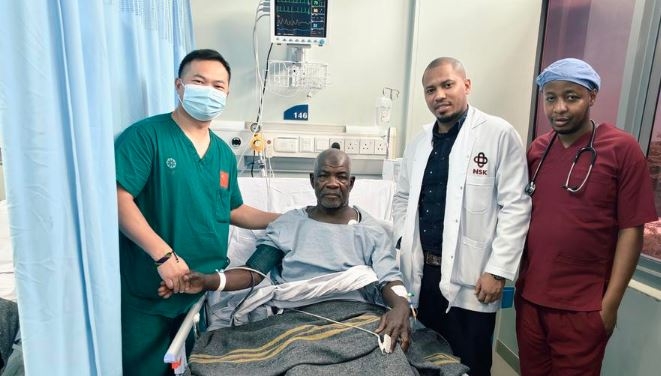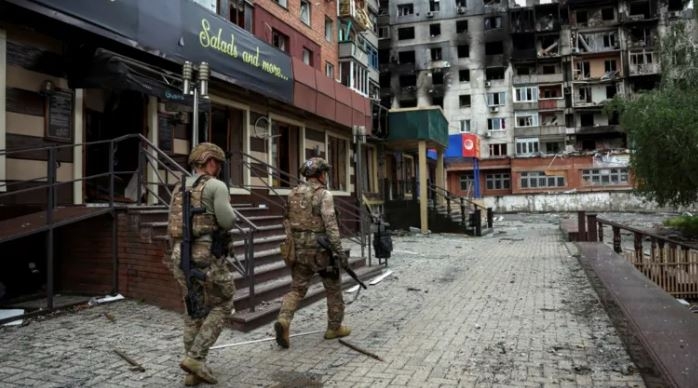In the unforgiving sun and high temperatures of Nameyana village in Turkana county, Magret Ikimat walks from house to house to assess the health and well-being of children.
It’s her norm. Although she does not have formal education, Ikimat is fondly referred to as the ‘village doctor’ because she’s on a mission to save lives at her village in Turkwel ward, Loima subcounty.
She is an accomplished Community Health Volunteer in Nameyana, transforming health services delivery in this marginalised, sun-scorched and hard-to-reach region.
She uses a respiratory timer and bead necklace (colour-coded beads) known as Ngakoromwa in the Turkana dialect innovated to diagnose pneumonia in children and make a referral before it gets worse.
Ikimat says it only takes a minute to know whether a child has pneumonia or not.
“I’m on a mission to save the lives of young ones and the well-being of women in the community,” Ikimat says.
“I’m working hard to ensure no child succumbs to pneumonia, malaria, malnutrition and diarrhoea in my village.”
Pneumonia is one of the leading causes of death in children under five years old despite being easily preventable and treatable.
According to the World Health Organisation (WHO), pneumonia accounts for 15 per cent of all mortalities in children in the country, followed by diarrhoea, malaria, HIV and other Non-Communicable Diseases (NCDs).
Despite the hot sun and high temperatures in Turkana, pneumonia cases in children are recorded and reported in health facilities.
The narrative is changing, albeit slowly, due to the efforts of the Turkana government in collaboration with development partners through the Beads by Breath innovation used to diagnose pneumonia in children.
The county government and development partners are using CHVs to implement simplified protocols for identifying and treating preventable diseases at household level.
I’m on a mission to save the lives of young ones and the well-being of women in the community
BEADS BY BREATH
Ikimat, a beneficiary of the innovative approach, has mastered the art of using a bead necklace to diagnose pneumonia in children.
She says when a child has a rapid heartbeat, a cough and difficulty in breathing, loss of appetite, chest pain and high temperature, it is considered to have pneumonia.
“I use the bead necklace and respiratory timer to diagnose the child, and in just one minute, I will be able to know whether the child has pneumonia or not,” Ikimat says.
She says the string has 60 beads, and she counts the breathing of the child to one minute, when the respiratory time is set.
Ikimat says there are two types of necklace beads they use. For a child above one year to five years, they use red and black beads, and for a child below one year, they use green and red beads.
For the child below a year, the necklace beads have 60 beads, consisting of 49 green and 11 red beads, and for the child above one to five years, it has 60 beads, consisting of 21 red and 39 black beads.
Children above one year with respirations of above 39 breaths per minute and those with respirations of above 49 breaths are considered to have pneumonia.
When Ikimat starts to examine a child, she asks the mother or the caregiver to calm them down.
She keenly observes the movement of the child’s chest while holding the necklace beads.
She sets the respiratory timer and starts to count the beads by breath. The respiratory timer counts to one minute and when it stops, she counts the number of beads. A complete breath is in and out, that’s equivalent to one bead.
If the child is found with uncomplicated pneumonia, she gives the child dispersible amoxicillin tablet. If it’s worse she refers the child to the nearest hospital for treatment.
Undernourishment weakens a child's immune system, making them more susceptible to infections, including pneumonia
REDUCING CASES
Just like Ikimat, Peter Lopeyok is a Community Health Volunteer in Loima subcounty. He serves Nasiger village.
Lopeyok says the devastating drought and resulting hunger make it hard for parents to access food and water, and has increased cases of malnutrition, which also multiplies the risk of pneumonia in children.
To avert the negative impact of malnutrition, CHVs have trained mothers or caregivers to detect and monitor malnutrition among children.
“We have trained mothers or caregivers on how to use a simplified colour Mid Upper Arm Circumference tape, also called Family or Mother MUAC, for detecting and monitoring malnutrition among young children,” he said.
He says mothers can now monitor their own children at home and refer those found to be malnourished to a CHV or healthcare facility for treatment.
Calis Elamach, the nutrition coordinator of Save the Children, says they are working together with the Turkana government to increase access of treatment of under-five children to prevent premature deaths.
“Through the CHVs, we can identify the danger signs in minors and treat them on time,” he said.
“We have trained the CHVs to have the knowledge and skills of treating diseases affecting children, such as malaria, diarrhoea, pneumonia and malnutrition.”
CHVs use the beads and respiratory timer, and have been trained to detect fast breathing, which is a sign of infection, by initiating the referral.
Elamach said they are currently working on the policy for the treatment of pneumonia, and it has been approved by the government.
They are training CHVs to treat the uncomplicated pneumonia cases by using the amoxicillin dispersible tablet.
Loima Subcounty Health medical officer Abdirahaman Musa says malnutrition, lack of vaccination and crowded living are factors leading to pneumonia in Turkana.
“Undernourishment weakens a child's immune system, making them more susceptible to infections, including pneumonia,” he said.
The likelihood is increased by inadequate immunisation against common pathogens.
“Living in crowded or poorly ventilated environments can contribute to the spread of respiratory infections,” Musa said.
According to WHO, pneumonia is a form of acute respiratory infection that affects the lungs and is caused by viruses, bacteria and fungi. WHO ranks Kenya among the top 15 countries with the highest premature deaths globally.
Pneumonia is one of the most highly reported disease incidents in Kenya. Between June 2020 and June 2023, health data shows Turkana recorded and reported 74,464 cases of pneumonia, and 1,866,127 pneumonia cases were recorded and reported in health facilities across the country.
Also, according to the Unicef and Save the Children report on pneumonia, titled ‘Fighting for Breath in Kenya’, 9,000 children under the age of five succumbed to pneumonia in Kenya in 2018.
This represented an average of 24 child pneumonia deaths every day. Some counties in Kenya are more affected by pneumonia than others.
COLLABORATION EFFORT
Medical Services chief officer Gilchrist Lokoel says the average distance from a health facility, while still below the recommended 5km of WHO, has dropped from 50km in 2013 to 15km today.
He said the Turkana government, in collaboration with development partners, has made it easy for CHVs to diagnose diseases, treat and refer children to hospital for treatment.
“For children below two months, there is an expected number of breaths,” he said.
“For one-year-olds, there are breaths that we expect, and five-year-olds, there are breaths that we expect. Those breaths, we have taught the CHVs to observe the movement of the chest and count the breaths.
“In the event the number of breaths are more than what is expected then CHVs are able to know the child has pneumonia,” he said.
Lokoel said the CHVs can treat the diseases early enough before they even reach the health facility.
The county is working with USAid Nawiri to implement the Integrated Community Case Management (ICCM) approach to strengthening community health systems.
USAid Nawiri is a five-year Resilience and Food Security Activity implemented by Mercy Corps in partnership with Save the Children.
Others are Research Triangle Institute, Boma Project, African Population and Health Research Centre and Caritas Lodwar.
USAid Nawiri aims to reduce persistent acute malnutrition in Kenya's arid and semi-arid lands, including Turkana and Samburu counties.
The partners help with financial support, mentorship trainings and reporting tools for the CHVs.
Lokoel says the CHVs are given supplies and equipment used to manage childhood ailments, such as malaria, diarrhoea, pneumonia and malnutrition.
Malaria, diarrhoea, pneumonia and malnutrition diseases account for the highest number of hospitalisations and deaths among young children in Turkana, he said.
He said the tools and drugs given include: thermometer, colour-coded beads for detecting pneumonia, oral rehydration salts and zinc sulphate for managing diarrhoea.
Others are Mid-Upper Arm Circumference (MUAC) tape for detecting wasted (too thin for height) children.
The county enacted the Community Health Service Act and, through this initiative, currently almost 2,000 CHVs have been deployed to nearly every village in the county to offer the services. To sustain their work, the CHVs receive a regular stipend, equipment, supplies and mentorship from the county government.
Lokoel said the county has doubled the health budget from Sh600 million to Sh1.2 billion, increased health facilities from 72 to 282, and health workers from 273 to 2,000, including increasing the number of doctors and specialists.
Emalach said Save the Children, in collaboration with the county government, is implementing the Global Malnutrition Initiative (GMI) project, which supports the ICCM.
The GMI project supports ICCM approach by linking the treatment of Severe Acute Malnutrition and Moderate Acute Malnutrition into the services provided by CHVs.
Through the GMI project, 247 CHVs have been trained to provide integrated care for severe acute malnutrition and moderate acute malnutrition at the community level.
“Through this, they are able to reach many community members who are unable to get health services for themselves and their children due to the distance to the nearest health facility among other factors,” Emalach said.












